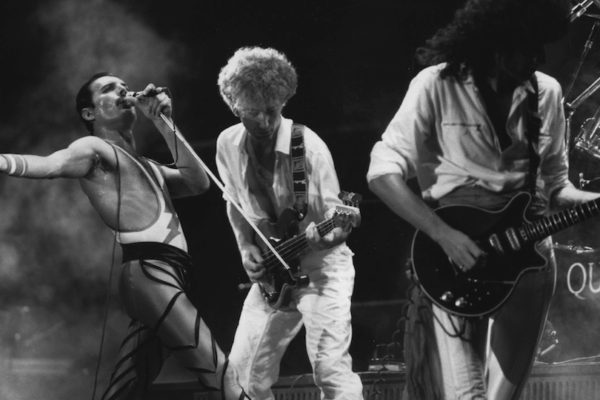Editor’s Note: There are certain tracks that are, well, “epic” — memorable, larger than life, carved into music history. In this series, we look at one of them.
***
A rock song with an operatic middle. A male singer with a flair for the cryptic. A production design populated with more than one hundred vocal overdubs, and a barrelling guitar solo that flitted between pastoral and metal with furious conviction. Queen was really pushing the boundaries of 1970s pop with “Bohemian Rhapsody.”
Composer Freddie Mercury, who persuaded bandmates Brian May and Roger Taylor to devote their vocal energy to the track, fought tooth and nail for its release. Not only that, it set up a template for future British rock songwriters (Thom Yorke and Justin Hawkins are two examples), giving credence to the philosophy that the only limit is imagination. It couldn’t have hurt that Mercury played his parts on a C.Bechstein piano, reportedly the same model Paul McCartney used on the sprawling “Hey Jude.”
Mercury arrived at the studio with the song mapped out and guided May through the dense vocal performances, as well as the hard rock section at the end of the song. Recording began on August 24th, 1975 at Rockfield Studio 1 near Monmouth, South Wales, before moving on to other venues. By the time the song was completed, the band had spent three weeks on the recording- roughly the average time spent on an entire album – and seventy hours on the vocal harmonies.
The song is peppered with esoteric references, including Scaramouche, the fandango, Galileo Galilei, as well as Arabic chants of prayer (“Bismillah!”) The meaning of the song died with Mercury, although some writers, including Lesley Ann Jones, have come to see it as an admission of Mercury’s homosexuality. Others, such as Kenny Everett, claim Mercury thought it was “random rhyming nonsense” that hit the airwaves. Considering the dense subject matter (“I don’t wanna die..), the song could have been inspired by Mercury’s exile from Zanzibar for England.
The tune triumphed on the charts, hitting the number one spot in the United Kingdom, as well as the US Top Ten. Mercury made a tidy sum from the royalties, although it must have bemused him no end that Taylor made just as much for writing the B-side, “I’m In Love With My Car.” As it happens, the more stripped-back “I’m In Love With My Car” was easier to perform live, giving Taylor one vocal in their live set.
Considering the song’s intricate nature, the band was reluctant to perform “Bohemian Rhapsody” on Top of The Pops, so they agreed to make a promotional video to accompany the single. Unlike the lusher recording, the video was recorded in only a few hours, hinging on an image of the quartet in a diamond formation.
Queen performed segments of “Bohemian Rhapsody” at Live Aid, and the tune enjoyed a second wave of popularity during the 1990s, thanks to its appearance in Wayne’s World. Mercury didn’t live to see Wayne’s World, having succumbed to AIDS in 1991. As a mark of respect, Queen re-released the song as a Double A-side single with Taylor’s mournful “These Are The Days Of Our Lives” on the flip side. May and Taylor continue to tour as Queen, with Adam Lambert performing Mercury’s scintillating falsettos in his absence. May continues to champion the track, although he’s as oblivious to the meaning of the song as anyone is.
“Well, I don’t think we’ll ever know, and if I knew I probably wouldn’t want to tell you anyway,” May admitted, “because I certainly don’t tell people what my songs are about. I find that it destroys them in a way because the great thing about a great song is that you relate it to your own personal experiences in your own life. I think that Freddie was certainly battling with problems in his personal life, which he might have decided to put into the song himself. He was certainly looking at re-creating himself. But I don’t think at that point in time it was the best thing to do, so he actually decided to do it later. I think it’s best to leave it with a question mark in the air.”
-Eoghan Lyng
Photo: Getty Images




It is, of course, brilliant. I remember being absolutely gobsmacked when I first heard it. I went out and bought the 7 inch picture sleeve single with a black & white photo of the boys looking resplendent. Lost in the mists of time, sadly.
And like “Hey Jude”, “3:05” hit radio of the day played the whole damn wonderful thing.
Good “rhapin'”, mate.
I actually hated it at first… as a 16 year old, I wanted more Sheer Heart Attack…
But soon it was all the rage… You couldn’t go to a teenage softball game in America in the summer of 1976 without hearing the crowd sing the opera potion in the stands when the game got boring!